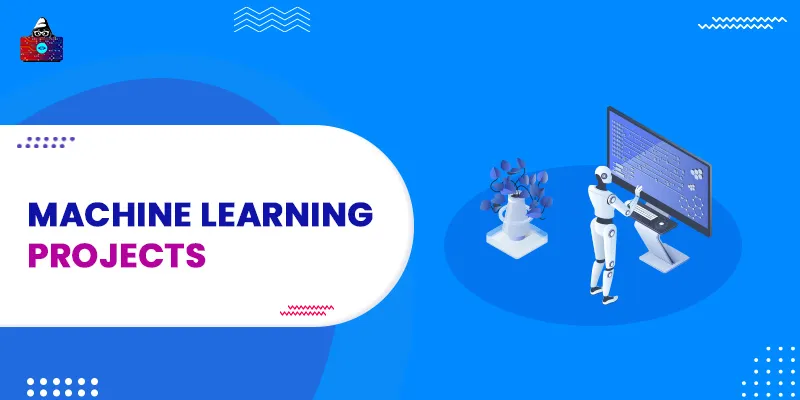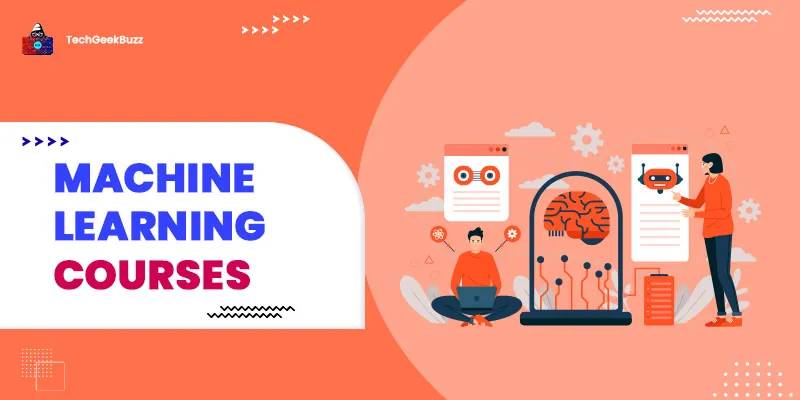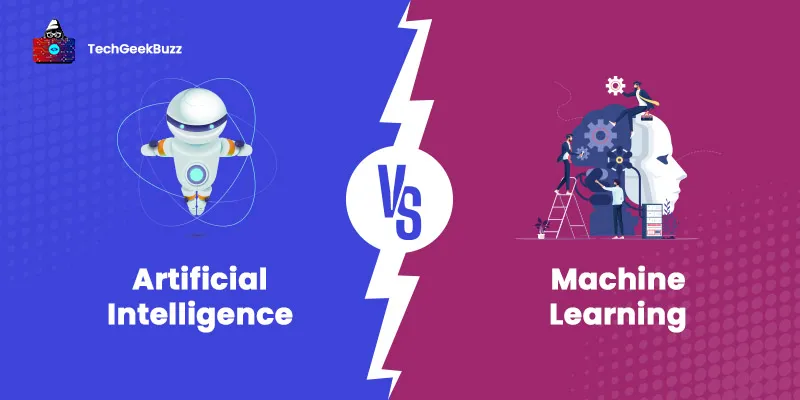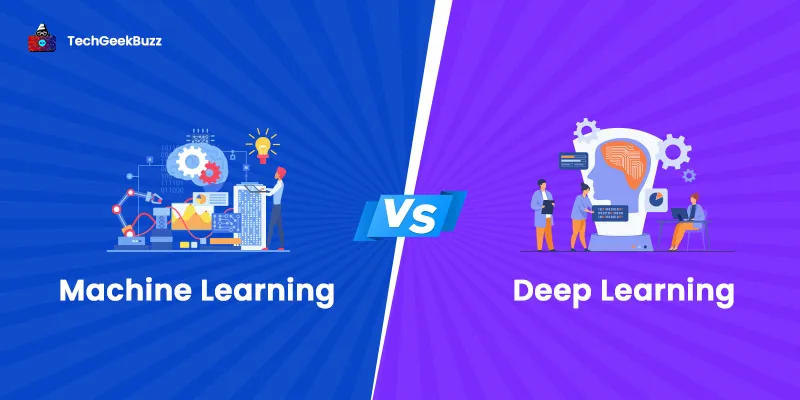Machine learning is a branch of AI (Artificial Intelligence), where machines can learn with or without supervision and perform tasks that only humans could do earlier. Machines are fed with large volumes of data, which enable them to train themselves and then formulate a general algorithm that works for a new set of data.
Using this algorithm, machines can find patterns and trends, predict future outcomes and business decisions, and thus prove to be useful for businesses to grow faster. This process is called data science, where raw data is taken, processed, and fed to machines to derive useful business insights. Machine learning is used extensively in data science and has become an integral part of business strategies now.
How to Learn Machine Learning?
To start with, you should know how data is fed to the machine learning algorithms. For this, you should know the basics of data science. If you want to specialize in machine learning or become a machine learning engineer, you should be an expert in any of the programming languages used for data science like R, Python, Java, and Scala.
Apart from this, you should also have a working knowledge of SQL concepts. It would help if you were thorough with using data structures like lists, queues, maps, etc.
Top 10 Machine Learning Projects With Source Code
Once you have learned the concepts and theory, you have to apply all the knowledge. Projects are one of the best ways to master any technology, and machine learning is no exception. But there are so many projects which might make you think – which one should I start with?
Worry not! We have listed 10 machine learning projects of different levels , and you can start with the first one - the easiest one which will boost your confidence in doing the next set of projects. As you take up each, you will gain the required experience and skills for more complex ones.
The projects we have selected use Python, so you should be familiar with the basics of Python. So, without much ado, let us start learning the 10 top machine learning projects for beginners:
1. Stock Price Prediction

To predict stock prices, we can use logistic regression or recurrent neural networks like LSTM. For this project, we will see how to use linear regression, as it is one of the simplest algorithms to learn and use.
Suppose we have the stock of an XYZ bank, and we want to see how Nifty changes can impact the bank’s stock price. So, we will find a function that helps us guess the price of XYZ’s stock based on Nifty's price (index).
For this, we will need records. We can take data for the past n months or n years based on our requirement. Sometimes, we may realize that the volume of data is insufficient for making any useful predictions, in which case we have to take more data. You can download any data set from the Kaggle website . The basic linear regression equation is:
yi = bo + b1xi + ei,
where y is the dependent variable, which in our case is the stock price, x is the independent variable (Nifty) based on which we find the value of y, bo is the intercept (where x & y meet), b1 is the slope coefficient, and e is the error.
For linear regression, we need first to find the correlation between the x & y variables and get some regression statistics like Multiple R, R2, standard error, etc. R2 is nothing but the correlation coefficient, which shows how close the data is to the fitted regression line.
If we draw a scatter plot, we can see the correlation between the 2 variables. Using Excel ( check this video ), we can calculate all the statistics. The video also shows how adding new variables changes the resulting value.
Check out this informative blog on how to get regression statistics and how it is applied to get the stock price predictions.
You can download the source code here .
2. Email Spam Detection

The most popular algorithm for email spam detection is Naïve Bayes, based on the Bayes theorem of conditional probability. Here, there are only two possible results – an email is either spam or not spam.
3. Twitter Sentiment Analysis

Coursera provides a detailed course on Twitter sentiment analysis, which covers Natural language processing basics and how the Naïve Bayes classifier can be used to predict sentiment from particular tweets. The course uses Python for machine learning.
Try the sentiment analysis course for hands-on with this project.
Get the source code here .
4. Change Images Into Cartoons

A fun project, it is possible to change images into cartoons using machine learning. Using the OpenCV library of Python, we can easily perform computer vision, image, and video processing. To use OpenCV, we need CV2.
Also, to process images, we need a numpy package because images are stored as numbers. Further, to upload our choice image, we need imageio, and we can use matplotlib or seaborn for visualization.
Check out the complete project here .
5. Handwriting Recognition

This is a slightly advanced machine learning (rather deep learning) project. We will use Keras to do this project. Tensorflow is another good tool you can use for this project and many other similar machine learning projects. You can pick the dataset from Kaggle in CSV format.
Below are the libraries we need to import:
import keras from keras.models import Sequential from keras.layers import Dense, Dropout, Flatten from keras.layers import Conv2D
First, we load and split the data into training and testing datasets, so that it is easier to evaluate the model.
(x_train, y_train), (x_test, y_test) = load_data()
Before applying the model, we need to format and standardize the data and perform some pre-processing. Since we will be using the CNN model, we will create one more dimension. For this, we need to reshape the matrix. Keras has some utility methods to do the same.
x_train = x_train.reshape(x_train.shape[0], 28, 28, 1)
CNN model contains multiple convolutional and pooling layers. We create a Sequential model and then apply the required parameters and properties.
model = Sequential() model.add(Conv2D(32, kernel_size=(3, 3),activation='relu',input_shape=input_shape)) model.add(Flatten()) model.add(Dense(256, activation='relu')) model.add(Dropout(0.5)) model.compile(loss=keras.losses.categorical_crossentropy,optimizer=keras.optimizers.Adadelta(),metrics=['accuracy'])
Now, we train the model using the training dataset.
model.fit(x_train, y_train,batch_size=batch_size,epochs=epochs,verbose=1,validation_data=(x_test, y_test))
To check the accuracy, let us evaluate the model:
model.evaluate(x_test, y_test, verbose=0)
This will return two parameters, error and accuracy, through which we can re-apply the model by changing the weights and re-evaluate until we achieve the desired accuracy.
Get the complete source code here .
6. Housing Prices Prediction

Earlier methods (traditional) for housing price prediction were not efficient as they did not consider the model performance adequately. This project from ScienceDirect uses various methods and models to determine the housing prices considering the factors like housing price index (HPI), area, income, population, location, etc.
The project also enables readers to note the difference between the different models. Some algorithms used are Random forest, XGBoost, Hybrid regression, and stacked generalization.
Check the complete project on the housing price prediction .
7. Fake News Detection

This is a handy application of machine learning, particularly because of loads of news coming to us nowadays from different sources. To understand which is fake and which is not, we need a robust system. Of course, for improved reliability and robustness, we need to use an algorithm that works consistently.
Through this project, we will learn about recurrent neural networks and LSTM. The guided project from Coursera covers the basics of RNN and LSTM and takes up this project as an example.
Check out the fake news detection project using ML and Python .
8. Personality Prediction

Personality prediction is extensively used by Facebook user-profiles and comments/texts posted by users. The project is based on the Big Five Personality model, which is the most popular out of all the models. This consists of 5 traits, openness, conscientiousness, extraversion, neuroticism, and agreeableness.
The study uses traditional approaches like SVM, logistic regression, linear discriminant analysis, etc. It compares the outcomes with deep learning techniques like multi-layer perceptron, LSTM, CNN, and Gated Recurrent Unit (GRU).
You can take the following project details as a reference and study their findings to further work on this project.
To get the sample data set, visit the stanford.edu website.
9. Customer Segmentation

This project uses k-means clustering to cluster customers with similar preferences. KDNuggets explains the algorithm and the implementation of this project in detail, including where you can get the dataset from and different types of visualizations to analyze data.
Check the complete project here .
10. Product Recommendation (Collaborative Filtering)

Recommender systems help websites show content based on the user's preferences and browsing patterns. Python is one of the most popular and easiest languages to build a recommender system. Most recommender systems use collaborative filtering, wherein the system guesses what a user may like based on the likes, ratings, and reactions of similar users.
The other types of recommendation systems are content-based, utility-based, knowledge-based, etc. Many factors come into the picture while creating a recommendation list for a user: his personal preferences, previous likes and dislikes, likes of users who have liked the other content this user has liked, users with the same interests and preferences as this user, etc.
Check out the detailed project here .
Further Learning
In this article, we have pointed to various resources to take up the mentioned projects. After learning them, you can take up many more projects and courses to enhance your learning.
People are also reading:
- Machine Learning Interview Questions
- What is Machine Learning?
- Best Machine Learning Frameworks
- Machine Learning Books
- How to become a Machine Learning Engineer?
- Classification in Machine Learning
- AI vs. ML vs. Deep Learning
- Machine Learning Applications
- Machine Learning Algorithm
- Data Science vs. Machine Learning
- Decision Tree in Machine Learning




